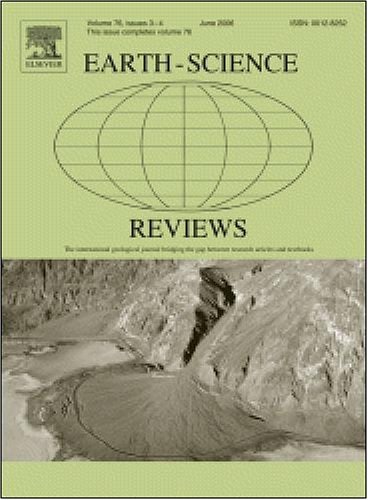裂谷边缘颈状域的指纹:世界范围内记录最详实的实例综述
IF 10.8
1区 地球科学
Q1 GEOSCIENCES, MULTIDISCIPLINARY
引用次数: 0
摘要
本文章由计算机程序翻译,如有差异,请以英文原文为准。
Fingerprints of necking domains at rifted margins: A review of the best-documented examples worldwide
During rifting, the continental crust is usually thinned from its initial thickness to ca. 10 km over only a few million years. The mechanisms of this so-called necking phase are incompletely understood, and yet they have major implications on the structural, thermal and isostatic evolution of rift systems. One major difficulty in studying the necking phase arises from its transient character in the framework of continental rifting, and from the subsequent extension and thermal relaxation that may overprint it. Consequently, the fingerprints of the necking process are partially dismembered and overprinted in present-day rifted margins, and hence are poorly constrained.
In this contribution, we synthesize data from the best calibrated necking domains worldwide to define general recognition criteria and identify the processes controlling the necking phase. We show that the necking domain of rifted margins usually displays the following body of evidence: (1) deformed basement directly overlain by undeformed syn-rift sediments; (2) exhumation of relatively deep continental crust; (3) syn-rift basement erosion and adjacent sandstone deposition; and (4) syn-rift and syn-tectonic/syn-kinematic shallow-water sediments directly overlain by syn-rift but post-tectonic/post-kinematic deeper-water deposits. We assert that the combination of these fingerprints cannot be explained by the classical high-angle normal fault model by itself and discuss the possible additional and/or alternative processes. We argue that extensional detachment faults can by themselves account for the combination of fingerprints listed above and are often required to accurate kinematic restoration of rift systems evolution.
求助全文
通过发布文献求助,成功后即可免费获取论文全文。
去求助
来源期刊

Earth-Science Reviews
地学-地球科学综合
CiteScore
21.70
自引率
5.80%
发文量
294
审稿时长
15.1 weeks
期刊介绍:
Covering a much wider field than the usual specialist journals, Earth Science Reviews publishes review articles dealing with all aspects of Earth Sciences, and is an important vehicle for allowing readers to see their particular interest related to the Earth Sciences as a whole.
 求助内容:
求助内容: 应助结果提醒方式:
应助结果提醒方式:


